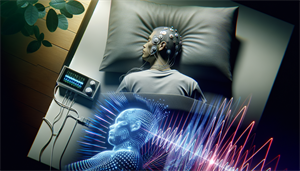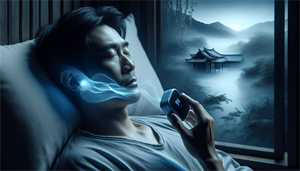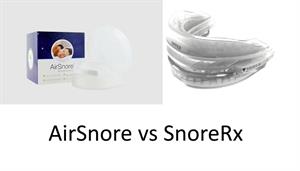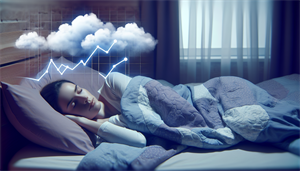If you’re experiencing chest pain and shortness of breath, you might be wondering, “can sleep apnea cause chest pain and shortness of breath?”
Indeed, sleep apnea, known for causing breathing interruptions during sleep, can indeed result in such symptoms. These disturbances in your nightly breathing can lead to reduced oxygen levels and put extra strain on your heart and lungs, sometimes manifesting as chest discomfort and difficulties in breathing.
This article will explore how sleep apnea affects your respiratory and cardiovascular systems, what symptoms to look out for, and what treatment options are available.
Key Takeaways
-
Sleep apnea, particularly in severe cases, can cause chest pain and shortness of breath due to oxygen deprivation and increased strain on the heart and lungs, highlighting an urgent need for proper diagnosis and treatment.
-
Risk factors for sleep apnea include age, sex, obesity, anatomical features, and medical conditions, and it can be effectively managed through PAP devices, oral appliances, surgical interventions, or lifestyle changes.
-
Untreated sleep apnea is associated with numerous cardiovascular diseases and complications, emphasizing the vital role of managing the condition to preserve overall heart health and prevent fatal events.
Exploring the Link Between Sleep Apnea and Chest Discomfort

Sleep apnea, a disorder marked by unexpected breathing pauses, is particularly prevalent during sleep. These breathing interruptions can lead to:
-
Chest discomfort
-
Difficulty breathing
-
Significantly impacting overall health
-
Potentially leading to serious health issues
It’s not just a matter of poor sleep; it’s a matter of heart health, too.
Indeed, the strong correlation between sleep apnea and chest discomfort can precipitate severe sleep apnea, a condition where breathing stops and restarts more than 30 times an hour. The more severe the sleep apnea, the more severe the chest pain and breathing problems may be, leading to a vicious cycle that can significantly impact one’s quality of life.
The Mechanism Behind Chest Pain in Sleep Apnea Patients
The chest pain experienced by sleep apnea patients is primarily due to oxygen deprivation. When breathing repeatedly stops during sleep, the body lacks the oxygen it needs to perform its normal functions, leading to discomfort in the chest area. In addition, the increased strain on the heart and lungs due to the blocked airway can lead to elevated stress on the heart, contributing to the experience of chest pain.
During these breathing interruptions, our body’s ‘fight or flight’ response triggers an over-activation of the sympathetic nervous system. This heightened activity can lead to an elevated heart rate and increased blood pressure, further contributing to chest discomfort.
So, the chest pain in sleep apnea patients is not just a symptom, but a sign of the body fighting to keep us alive.
Shortness of Breath: A Symptom of Sleep Apnea?
Indeed, shortness of breath is a symptom of sleep apnea, especially noticeable in central sleep apnea cases. Unlike obstructive sleep apnea, where the airway is physically blocked, central sleep apnea occurs when the brain fails to send proper signals to the muscles responsible for breathing. This communication failure leads to breathing pauses and subsequent shortness of breath.
In some cases, patients may exhibit a specific respiratory pattern known as Cheyne-Stokes breathing, characterized by a gradual waxing and waning of breathing, with periods of no airflow occurring at the nadir of breathing effort.
Managing underlying conditions, utilizing breathing assistance devices, or supplementing oxygen during sleep is often the treatment course for central sleep apnea.
Unpacking the Symptoms of Severe Sleep Apnea

The challenge in recognizing sleep apnea lies in the overlapping symptoms with other sleep disorders. However, understanding these symptoms can be the first step toward effective treatment and a better night’s sleep. Some common symptoms of sleep apnea include:
-
Loud snoring
-
Gasping or choking during sleep
-
Excessive daytime sleepiness
-
Morning headaches
-
Difficulty concentrating
-
Irritability
Severe sleep apnea is diagnosed when breathing stops and restarts more than 30 times an hour, distinguishing it from its moderate and mild forms.
Typical symptoms of severe sleep apnea include loud snoring, gasping for air, frequent awakenings, morning headaches, excessive daytime sleepiness, and difficulty concentrating. In severe cases, loud snoring is often accompanied by observed episodes of stopped breathing during sleep, waking during the night gasping or choking, and excessive daytime sleepiness. If you or a loved one are experiencing these symptoms, it’s time to take action.
Recognizing Obstructive Sleep Apnea
Obstructive sleep apnea, marked by airway obstruction during sleep, results in snoring, choking, and irregular breathing patterns. Several factors contribute to the development of this condition, including obesity, swollen tonsils, and underlying health problems such as endocrine disorders or heart failure.
The primary indicators of obstructive sleep apnea include:
-
Excessive daytime sleepiness
-
Loud snoring
-
Observed episodes of stopped breathing during sleep
-
Waking during the night
The insufficient oxygen intake due to the obstructed airway often leads to partial or complete awakenings as the body attempts to restore airflow.
These symptoms, if left unchecked, can lead to potentially serious health issues and a significantly reduced quality of life.
Identifying Central Sleep Apnea
Contrarily, central sleep apnea represents less than 1% of cases, making it less prevalent than obstructive sleep apnea. In central sleep apnea, the brain fails to send adequate signals to the muscles responsible for breathing, resulting in breathing pauses and subsequent shortness of breath.
This disorder is often associated with serious illnesses, such as heart failure, stroke, or sleeping at high altitudes. Understanding these symptoms and seeking medical attention can help manage central sleep apnea effectively and improve sleep health.
Risk Factors Contributing to Sleep Apnea and Respiratory Issues

Even though anyone can be affected by sleep apnea, certain risk factors amplify the odds of developing this disorder. These include:
-
Age
-
Sex
-
Obesity
-
Certain anatomical features of the head and neck
Men are more commonly affected by obstructive sleep apnea than women, with a notable difference in prevalence. The likelihood of developing sleep apnea is also significantly higher in older adults.
Obesity, in particular, has a significant impact on increasing the likelihood of developing sleep apnea. Some of the ways excess body fat can affect sleep apnea include:
-
Elevating pressure on airways
-
Leading to increased collapse of airways
-
Diminishing neuromuscular control
-
Worsening breathing difficulties
Lifestyle and Genetic Predispositions
The development of sleep apnea is also significantly influenced by genetics. Studies have shown that individuals with a first-degree relative who has sleep apnea are at a higher risk of snoring or having observed apneas themselves, indicating a strong family history component.
However, genetic predisposition does not mean sleep apnea is inevitable. Lifestyle changes such as:
-
maintaining a healthy weight
-
engaging in regular exercise
-
refraining from smoking
-
moderating alcohol consumption
-
adhering to good sleep hygiene practices
can significantly lower the risk and address genetic factors.
Medical Conditions That Exacerbate Sleep Apnea
Sleep apnea symptoms can also be intensified by certain medical conditions, heightening the risk of central sleep apnea. For instance, congestive heart failure can exacerbate sleep apnea due to the increase in left ventricular filling pressure and resulting elevated circulatory delay.
Likewise, having a stroke can elevate the likelihood of central sleep apnea. Additionally, brain stem infections can compromise the brainstem’s capacity to regulate breathing, potentially resulting in the emergence or exacerbation of sleep apnea symptoms.
Diagnosing Sleep Apnea and Related Health Issues

The diagnosis of sleep apnea entails a comprehensive assessment of symptoms, a physical examination, and sleep studies like polysomnography. This detailed assessment is critical to differentiating between obstructive and central sleep apnea, allowing for more targeted and effective treatment.
While diagnosing sleep apnea without a sleep study is feasible through the use of at-home sleep tests, they are limited to specific patients with obstructive sleep apnea and require interpretation by a healthcare professional. Therefore, in-clinic sleep studies are preferred for their ability to identify abnormal breathing patterns and distinguish between obstructive and central sleep apnea.
The Role of Polysomnography
Polysomnography, a sleep study type, tracks the following sleep aspects:
-
Breathing
-
Awakenings
-
Oxygen levels
-
Muscle movement
It is the most reliable method for diagnosing sleep apnea. During a polysomnography test, a technician will carefully apply small sensors to your head and body using adhesive, with the wires connecting the sensors to a computer allowing for movement during sleep.
Different types of PAP devices such as CPAP, BiPAP, and APAP offer flexibility in the air pressure levels tailored to individual patient requirements according to the severity and type of sleep apnea. These devices maintain an open airway during sleep, ensuring effective treatment and a good night’s rest.
When to Consult a Doctor
Recognizing the symptoms of sleep apnea and seeking medical help in a timely manner is critical. If you or a loved one experience the following symptoms, it’s time to consult a doctor:
-
Loud snoring
-
Waking up gasping or choking
-
Pauses in breathing during sleep
-
Excessive daytime sleepiness
Family members can play a crucial role in recognizing sleep apnea symptoms by observing and documenting any instances of loud snoring, breathing interruptions during sleep, or daytime fatigue. Having a supportive network can make the journey towards better sleep health less daunting.
Effective Treatment Options for Sleep Apnea Sufferers
Upon diagnosis, a variety of treatment options can effectively manage sleep apnea. These include:
-
Positive airway pressure devices
-
Oral appliances
-
Surgical interventions
-
Lifestyle modifications
The primary objective of addressing sleep apnea is to minimize breathing interruptions during sleep and enhance overall sleep quality.
Choosing the right treatment option is crucial and depends on the severity and type of sleep apnea, as well as individual patient needs and preferences. It is important to discuss these options with your healthcare provider to find the most suitable and effective treatment.
Positive Airway Pressure Devices

Positive airway pressure devices, such as continuous positive airway pressure (CPAP) machines, ease sleep apnea by delivering pressurized air into the airway, aiding breathing during sleep. These devices encompass different types such as APAP, CPAP, and BiPAP, tailored to address individual patient requirements according to the severity and type of sleep apnea.
A CPAP machine aids in the treatment of sleep apnea by:
-
Delivering pressurized air through the airway using tubing and a mask
-
Maintaining breathing and preventing pauses in respiration while sleeping
-
Resulting in a better quality of sleep and a significant reduction in symptoms.
Oral Appliances and Surgical Interventions
Positive airway pressure devices may not be suitable or effective for all individuals. In such cases, oral appliances and surgical interventions can provide an alternative treatment option. Oral appliances for sleep apnea function by repositioning the jaw or tongue to open the upper airway and alleviate physical blockages.
Surgical interventions, on the other hand, may involve the removal of tissue in the throat to expand the airway or implanting a device to stimulate the nerve that controls breathing. The success rates of these surgical interventions can vary widely, ranging from 35% to 90% depending on the specific procedure performed.
Lifestyle Modifications for Better Sleep Health
Lifestyle modifications can also play a significant role in managing sleep apnea. This includes:
-
Increasing physical activity
-
Maintaining a healthy diet
-
Balancing calorie intake
-
Reducing caffeine consumption
-
Avoiding nicotine
-
Having dinner earlier in the evening
-
Avoiding spicy, acidic, and fatty foods
Furthermore, cessation of smoking can significantly enhance sleep quality, which in turn can alleviate the sleep disruptions commonly linked to sleep apnea. Making these lifestyle changes can not only improve sleep health but also reduce the severity of sleep apnea symptoms and improve overall wellbeing.
The Impact of Poor Sleep on Overall Health
The far-reaching impacts on overall health can be attributed to poor sleep quality resulting from sleep apnea. Sleep apnea has been linked to various cardiovascular diseases such as:
-
hypertension
-
stroke
-
heart failure
-
coronary artery disease
It’s more than just a matter of poor sleep; untreated severe sleep apnea can lead to a higher risk of fatal cardiovascular events.
Furthermore, poor sleep can contribute to the development and progression of heart rhythm disorders. This is because sleep deprivation places additional stress on the heart and can lead to increased blood pressure.
Sleep Deprivation and Cardiovascular Disease
Cardiovascular disease development can be contributed to sleep deprivation caused by sleep apnea. It significantly raises the risk of heart failure by 140% and the risk of coronary heart disease by 30%.
Moreover, sleep deprivation can exacerbate issues with blood pressure and elevate the likelihood of heart disease, diabetes, and hypertension. Therefore, managing sleep apnea and improving sleep quality is not only crucial for a good night’s rest but also for maintaining good cardiovascular health.
Managing Blood Pressure and Heart Rhythm Disorders
For sleep apnea patients, managing blood pressure and heart rhythm disorders is vital as the condition can aggravate these issues, leading to additional health complications. Sleep apnea is strongly associated with:
-
high blood pressure
-
hypertension
-
recurrent heart issues
-
stroke
-
irregularities in heart rhythms
These risks highlight the importance of effectively managing sleep apnea to prevent further health problems.
Patients with sleep apnea are commonly prescribed medications such as spironolactone and acetazolamide to manage blood pressure and heart rhythm disorders. Additionally, positive airway pressure (PAP) treatment has been found to be effective in reducing the immediate consequences of sleep apnea on cardiovascular health.
Summary
In conclusion, sleep apnea is a serious sleep disorder that can lead to chest discomfort and shortness of breath. However, with early detection, effective treatment, and lifestyle modifications, it can be managed effectively. Remember, it’s not just about getting a good night’s sleep; it’s about protecting your heart health and overall well-being.
Frequently Asked Questions
How long will it take to reverse damage from sleep apnea?
Treating sleep apnea with CPAP for 12 months can almost entirely reverse damage to white matter, improving sleep and symptoms while decreasing the risk for cognitive issues.
Can sleep apnea hurt the heart?
Yes, sleep apnea can hurt the heart by increasing the risk of heart arrhythmias, heart failure, and coronary heart disease. It has also been linked to higher rates of high blood pressure, stroke, and coronary artery disease.
Can sleep apnea cause shortness of breath on exertion?
Yes, sleep apnea can cause shortness of breath and difficulty exercising. It's important to seek medical attention for proper diagnosis and treatment.
Why does my sleep apnea machine make my chest hurt?
Your sleep apnea machine may be causing chest discomfort due to too much initial pressure, which can be resolved by starting with low pressure that rises later in sleep. Additionally, consider checking for mask problems, as a leaking mask can lead to air flow over your eyes, causing dryness and irritation.
Conditions that may have chest pain as a symptom?
Some conditions that may have chest pain as a symptom include angina, heart attack, aortic dissection, and pericarditis. It's important to seek medical attention if you experience chest pain.


